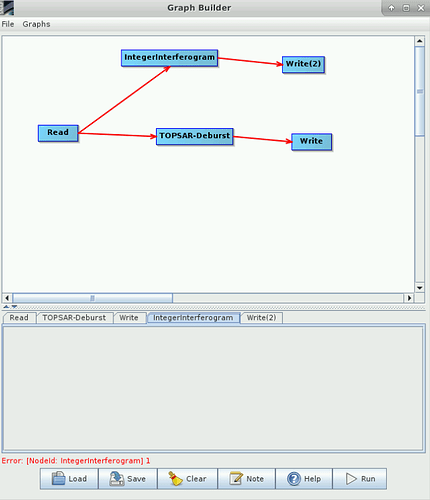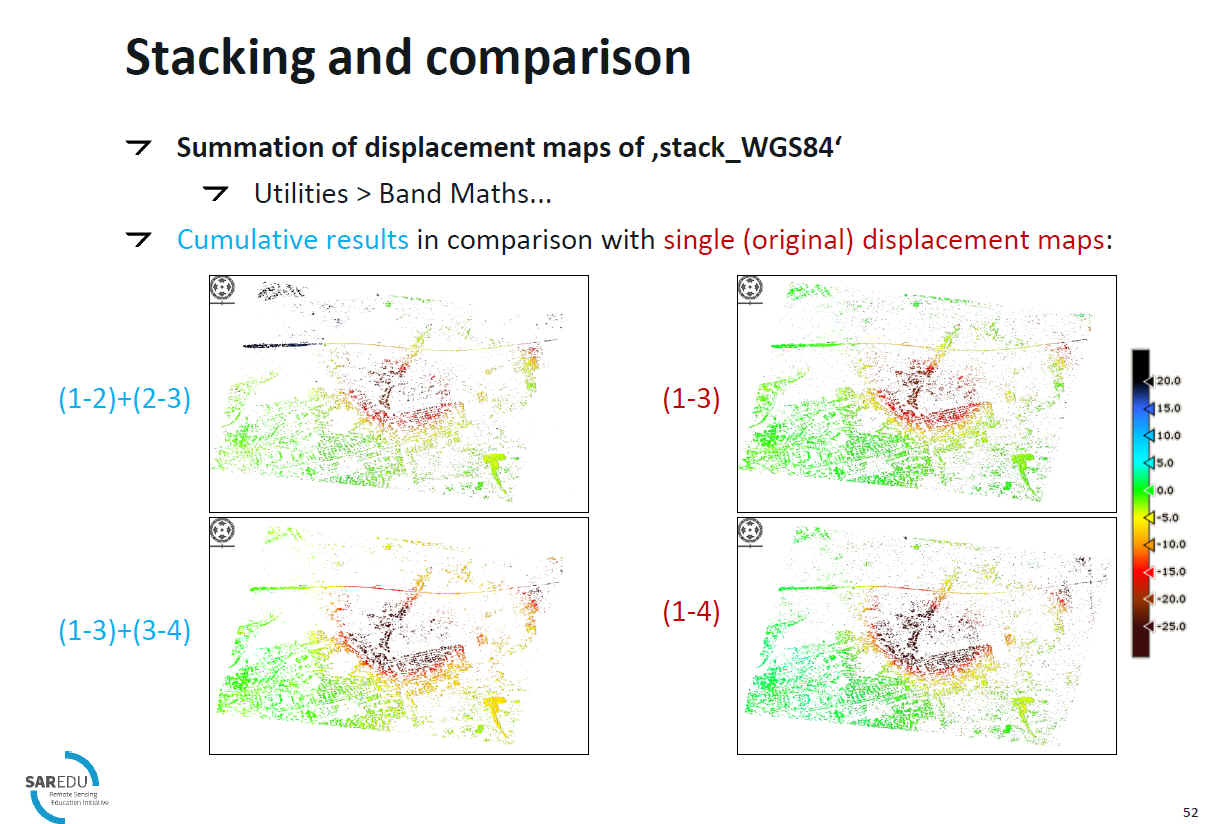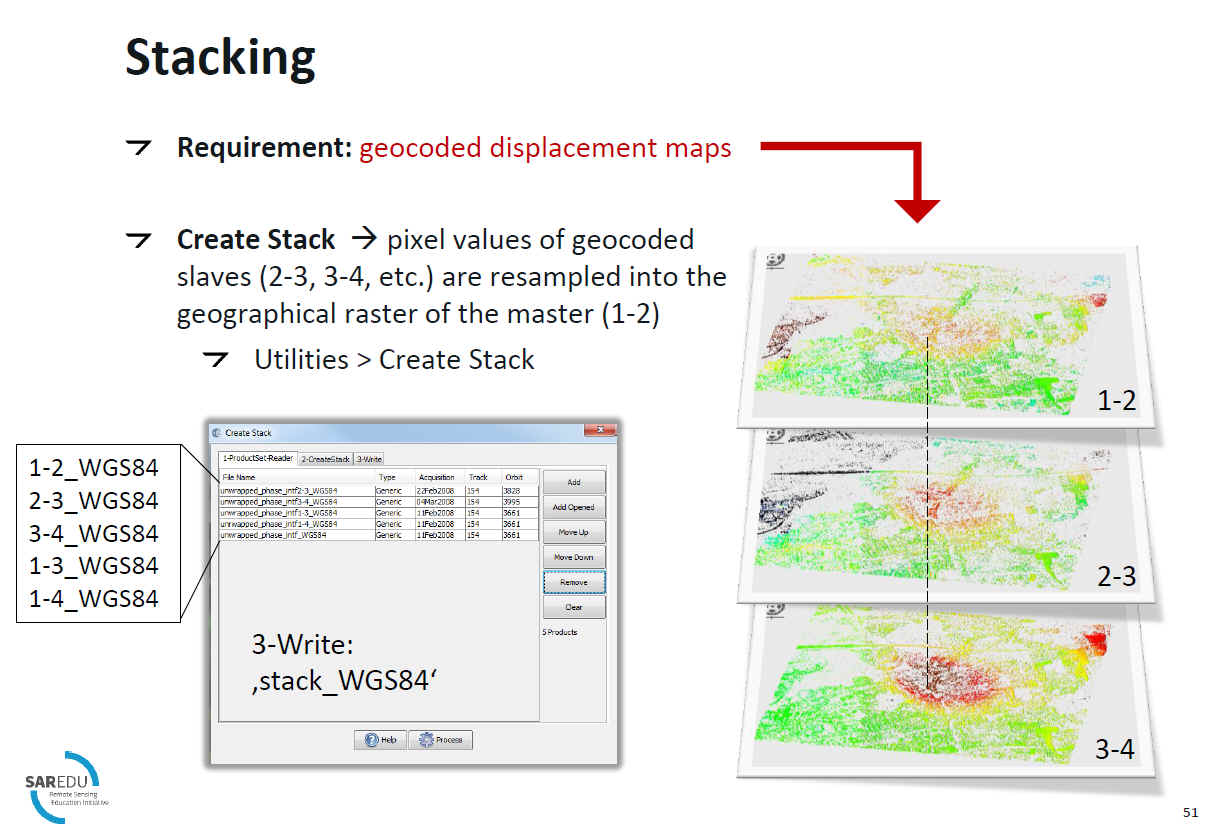If there’s a bug let’s fix it. Has the bug been described somewhere?
Hi Marcus,
Basically there is no bug, however we we are trying to create a stacking of Nos. of interferograms to ultimately create one averaged infgm, could be unwrapped to decrease the atmospheric effects, ,
I tested it here and failed to get a result.
But, as we have discussed before this concatenation procedure is questionable, in this case I’d recommend other path of stacking average stacking to get one product being able unwrapped it . I’m wondering why you still like to continue with this way?
why not, if it is an official module for exactly this purpose?
As you know very well, exporting to snaphu is the case of matter, and the way of replacing the file as well, ,
I don’t think our ways of producing interferogram averages produced correct results.
Hi Andy,
So finally you get agreed with me 
that’s why we need the integer interferogram combination module even more.
Let us try,
Hi folks.
I read this forum a lot before make my first question.
I ask in this topic, because I trying to combine interferograms, but I got a doubt (ok, millions of doubts, but for now just ask one):
¿When SNAP apply the “topographical phase removal”, the compute topo phase goes from –pi to pi (or 0 to 2pi)? ¿Or is like the unwrapped phase from –inf, to +inf?
example: the optional “Output topographic phase band” of one interferogram
go from 0.397273 to 8.308663, but applying a height ambiguity of 959m that means 60 to 1268m, and my zone is in the Andes, with a height difference of 3400m (heights from 600 to 4000m)
I’m lost.
Art
Hello, i would like to create an average ifgs (Interferogram Stacking) for subsidence mapping. i have some multiple masters-slaves ifg pairs (ab-bc-cd-…)
Can i just use SNAP to complete Step 7 to 10 in the Stack Averaging or i need to use Stamp/Matlab?
Prepare for STACK AVERAGING
STEP 1: master+first slave -> TOPS Corregistration, if necessary Deburst (and possibly subset), interferogram, topographic phase removal,
STEP 2: master+second slave -> coregistration, if necessary deburst (and possibly subset), interferogram, topographic phase removal. STEP 3: master+third slave -> coregistration, if necessary deburst (and possibly subset), interferogram, topographic phase removal. STEP 4: master+fourth slave -> coregistration, if necessary deburst (and possibly subset), interferogram, topographic phase removal.
STEP 5: Create a stack with results of step1,step2, step3, step4. STEP……
STEP 6 Create stacking averaging
STEP 7 SNAPHU EXPORT
STEP 8 UNWRAPPING
STEP 9 SNAPHU IMPORT
STEP 10 PHASE TO DISPLACEMENT
i have tried the averaging using snap but all of the phase are ruined. so, i guess…it is a NO
Later,
i have also come across a post on ID_3102_SAR-EDU_Tutorial_Deformation_monitoring_with_InSAR_pdf about the stacking for Summation of the stacks of Ifgs but no info how to Divide the Sum of Displacement by Total Time
i am thinking of doing it in gis/statistically but not sure how
Can anyone provide the steps on Interferogram Stacking? TQ
Dr @falahfakhri may have some info on this?
the steps you propose refer to classic DInSAR, and you can do them without StaMPS/Matlab.
The question on how to summarize displacements referring to different periods is challenging, yes. Especially when all slaves refer to the same master, the results cannot be summed up becausee they refer to periods containing each other (AB is within AC, for example).
Maybe someone has a suggestion.
so, it is easier to sum and divide the small baseline (ab-bc-cd) pairs? since the temp baseline is almost constant
found this 
can anyone suggest the gis steps for it? i believe the Uncertainty,E = Total (ref point - targets)/Ntargets?
at least you can add them togethern then and calculate a temporal average displacement, yes.
if we want to see the cumulative subsidence during (for example) a year, we should add all displacement bands for each pair using band math? (ab + bc + cd + de) is there another way?
I’d say so, yes. An example is given at the end of this tutorial: Sentinel-1 TOPS interferometry
We hope to include pyrate support in SNAP in the near future. It especially targets the multi temporal analysis of DInSAR pairs.
@ABraun regarding the combination of interferometric pairs, what if the different pairs have different Bperp (even values that are considered to small for DEM generation). How does this affects the final average of unwrapped phases. Should these pairs be discarded?


